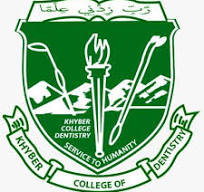ROAD SAFETY AND PREVENTION OF INJURIES
DOI:
https://doi.org/10.33279/jkcd.v12i2.71Abstract
Maxillofacial injury is a serious clinical problem resulting in serious dysfunctions including damage to the central nervous system. The esthetic and psychological aspects of injuries to the maxillofacial region are of great importance, as minor changes in the patient’s facial appearance after trauma may cause severe psychological disruption. The public health importance for countries to assess and evaluate their data on the magnitude, impact and characteristics of RTA cannot be overstated. Maxillofacial trauma resulting from RTA has been rising steadily over the past decade and is expected to increase by two and a half times in the next two decades. Young motorcyclists are losing their lives or suffering lifelong disabilities. An estimated 53.71% of maxillofacial surgical resources are being utilized in the management of these injuries. The recent seminar on Road Safety by Road Safety Council of Pakistan in collaboration with Research & Development Cell Khyber College of Dentistry Peshawar and Capital Traffic Police Peshawar is a key step towards understanding the gravity of compromised road safety. Road traffic accidents are predictable and preventable and the basic knowledge regarding road safety measures and its implementation is necessary.
In our country, large scale research is needed to further uncover factors that distinguish road traffic crashes and their characteristics from the rest of the world. Information gathered can be used to develop novel interventions. Regulating informal public transportation systems and enforcing safety legislation like seat belts and restriction of mobile phone use while driving, could go a long way in reducing the burden of RTAs. It is imperative that government makes this issue a top priority alongside other pressing public health problems in order to prevent deaths and dissibilities.
Additional Files
Published
How to Cite
Issue
Section
License
Copyright (c) 2022 Basheer Rehman

This work is licensed under a Creative Commons Attribution-NonCommercial-NoDerivatives 4.0 International License.
You are free to:
- Share — copy and redistribute the material in any medium or format
- Adapt — remix, transform, and build upon the material
- The licensor cannot revoke these freedoms as long as you follow the license terms.
Under the following terms:
- Attribution — You must give appropriate credit , provide a link to the license, and indicate if changes were made . You may do so in any reasonable manner, but not in any way that suggests the licensor endorses you or your use.
- NonCommercial — You may not use the material for commercial purposes .
- No additional restrictions — You may not apply legal terms or technological measures that legally restrict others from doing anything the license permits.










